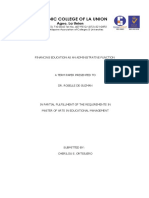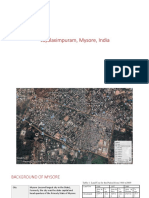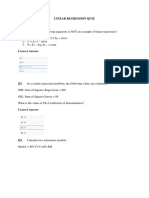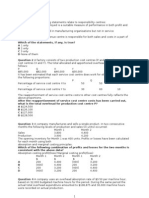Here are concise notes for **CompTIA Network+ Section 1** based on the content you
provided:
1.1 Understanding the OSI Model
- **OSI Model**: A reference model guiding network communication, not a protocol suite.
- **Layer 1 - Physical**: Focuses on the physical aspects of the network (cabling, signaling,
connectors).
- **Layer 2 - Data Link**: Defines the network’s “language”; uses MAC addresses for Ethernet.
- **Layer 3 - Network**: Handles routing via IP, fragments frames for different networks.
- **Layer 4 - Transport**: Manages TCP (reliable) and UDP (unreliable) communication.
- **Layer 5 - Session**: Manages sessions between devices (start, stop, restart).
- **Layer 6 - Presentation**: Handles data formatting, encryption, and character encoding.
- **Layer 7 - Application**: Where users interact (e.g., HTTP, FTP, DNS).
- **Mnemonics for OSI Model**:
- "Please Do Not Throw Sausage Pizza Away"
- "All People Seem To Need Data Processing"
- **Encapsulation**: Data moves down OSI layers, where each adds headers and trailers.
- **TCP Flags**: SYN (start), ACK (acknowledge), PSH (push data), RST (reset), FIN (end).
- **MTU (Maximum Transmission Unit)**: Maximum IP packet size that can be transmitted
without fragmentation.
1.2 Network Topologies
- **Star Topology**: Centralized structure with all devices connected to a central hub (common
in Ethernet).
- **Ring Topology**: Devices connected in a circle; still used in some WANs and MANs.
- **Bus Topology**: Early networks, prone to failure if the cable breaks.
- **Mesh Topology**: Redundancy through multiple connections; used in WANs.
- **Hybrid Topology**: Combination of topologies, most networks use this.
- **Wireless Topologies**:
- **Infrastructure**: Devices connect through an access point.
- **Ad hoc**: Devices connect directly without infrastructure.
- **Mesh**: Devices form a self-healing network.
### 1.2 Network Types
- **Peer-to-Peer**: All devices act as clients and servers, easy to set up but hard to manage.
- **Client-Server**: Central server manages clients, more secure but complex.
- **LAN (Local Area Network)**: High-speed network within a building or group of buildings.
�- **MAN (Metropolitan Area Network)**: City-wide network, larger than LAN but smaller than
WAN.
- **WAN (Wide Area Network)**: Connects LANs over long distances, often slower.
- **WLAN (Wireless LAN)**: Uses 802.11 protocols for wireless access.
- **PAN (Personal Area Network)**: Small-scale network for personal devices (Bluetooth, NFC).
- **CAN (Campus Area Network)**: Connects multiple buildings in a corporate or educational
setting.
- **NAS (Network Attached Storage)**: File-level access, shared over the network.
- **SAN (Storage Area Network)**: Block-level access, higher performance than NAS.
1.2 WAN Technologies
- **MPLS (Multiprotocol Label Switching)**: Adds labels for easy routing across WAN, layer 2.5
protocol.
- **SD-WAN**: Software-defined networking for WANs, optimized for cloud services.
- **Demarcation Point**: Where a network connects to external service providers.
- **Smartjack**: A network interface with diagnostics for troubleshooting.
1.2 Virtual Networks
- **Network Function Virtualization (NFV)**: Virtualizes network functions (routers, firewalls) on a
hypervisor.
- **vSwitch**: Virtual switches that function like physical switches in virtual environments.
- **vNIC**: Virtual Network Interface Card, necessary for virtual machines to connect to
networks.
1.2 Provider Links
- **Satellite**: High-latency, expensive, used in remote areas.
- **Copper**: Traditional, limited bandwidth, used in DSL and cable modems.
- **DSL**: Asymmetric speeds, faster download than upload, limited by distance from the central
office.
- **Fiber**: High-speed, long-distance communication, costly but growing in popularity.
- **Metro Ethernet**: Local, high-speed network within metropolitan areas.
1.3 Copper Cabling
- **Twisted Pair**: Most common cabling, with balanced signal pairs to reduce interference.
- **Coaxial Cable**: Used in television and internet connections, less prone to interference.
- **UTP (Unshielded Twisted Pair)**: No shielding, most common type.
- **STP (Shielded Twisted Pair)**: Shielded to prevent interference, used in high-noise
environments.
�- **Copper Categories**:
- **Cat 5/5e**: Up to 1000 Mbps.
- **Cat 6**: 10 Gbps for short distances, up to 100m for lower speeds.
- **Cat 7/8**: Shielded, supports 40 Gbps.
### 1.3 Optical Fiber
- **Multi-mode Fiber**: Short-range, used in buildings.
- **Single-mode Fiber**: Long-range, up to 100km.
- **UPC vs. APC Connectors**:
- **UPC**: Flat-polished connectors, more reflective.
- **APC**: Angled connectors, lower reflection but higher loss.























































































